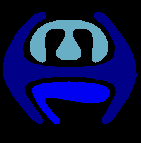
| CREATIONS AND DISCOVERIES IN SCIENCE |
Lorenzo Magnani
Computational Philosophy Laboratory
Department of Philosophy - University of Pavia - I-27100 Pavia - Italy
e-mail: lorenzo@philos.unipv.it
In different theoretical changes in theoretical systems we witness different kinds of discovery processes operating. Discovery methods are "data-driven", "explanation-driven" (abductive), and "coherence-driven" (formed to overwhelm contradictions). Sometimes there is a mixture of such methods: for example, an hypothesis devoted to overcome a contradiction is found by abduction. When a contradiction (or an anomaly) arises, consistency can be restored by rejecting or modifying any assumption which contributes to the derivation of contradiction. Hence, the derivation of inconsistency contributes to the search for alternative, and possibly new hypotheses.
The aim is to emphasize the significance of abduction in order to illustrate the problem solving process and to propose a unified epistemological model of scientific discovery. The model first describes the different meanings of the word abduction (creative, selective, to the best explanation, ``model-based'') in order to clarify their significance for epistemology and artificial intelligence. I will also illustrate abductive reasoning and its formal models in order to classify and analyze the different roles played by inconsistencies in different reasoning tasks. Many ways of ``governing'' inconsistencies are considered: from the methods activated in diagnostic settings and consistency-based models to the typical ones embedded in some forms of creative reasoning, from the interpretations in terms of conflicts and competitions to the actions performed on empirical and conceptual anomalies, from the question of generating inconsistencies by radical innovation to the connectionist treatment of coherence.
e-mail: hmp@ipvvis.unipv.it